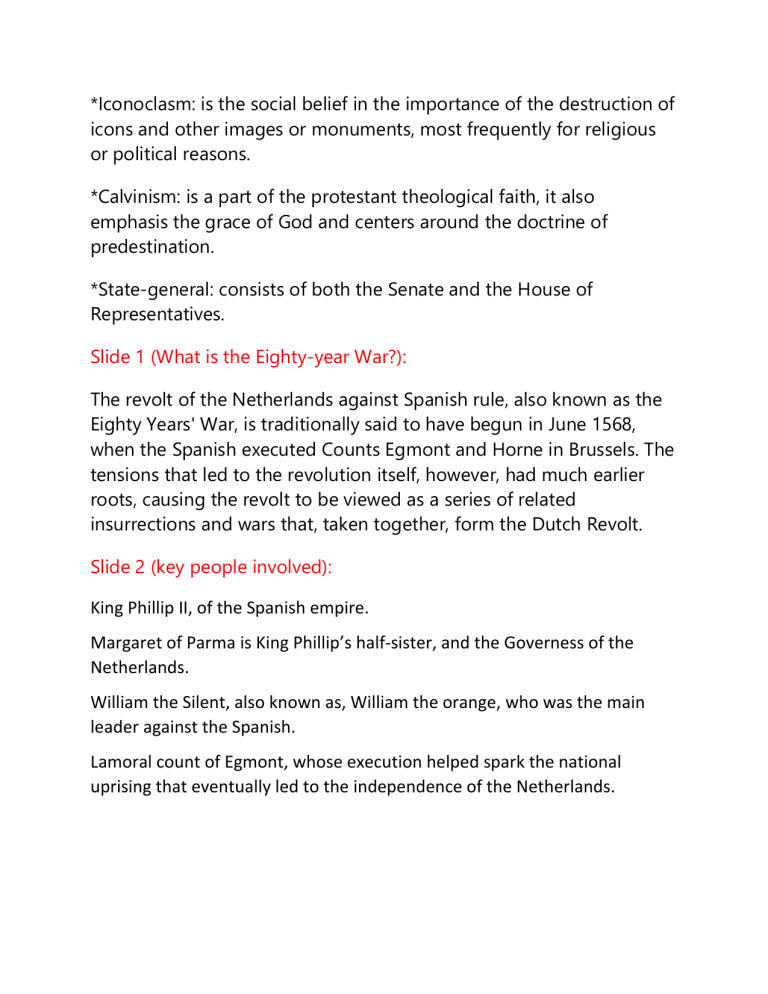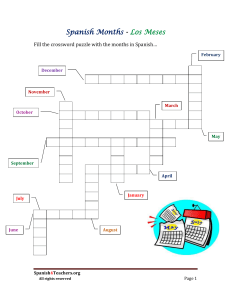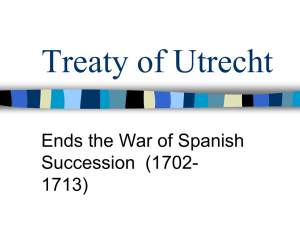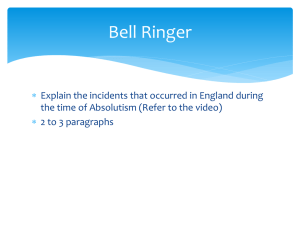
*Iconoclasm: is the social belief in the importance of the destruction of icons and other images or monuments, most frequently for religious or political reasons. *Calvinism: is a part of the protestant theological faith, it also emphasis the grace of God and centers around the doctrine of predestination. *State-general: consists of both the Senate and the House of Representatives. Slide 1 (What is the Eighty-year War?): The revolt of the Netherlands against Spanish rule, also known as the Eighty Years' War, is traditionally said to have begun in June 1568, when the Spanish executed Counts Egmont and Horne in Brussels. The tensions that led to the revolution itself, however, had much earlier roots, causing the revolt to be viewed as a series of related insurrections and wars that, taken together, form the Dutch Revolt. Slide 2 (key people involved): King Phillip II, of the Spanish empire. Margaret of Parma is King Phillip’s half-sister, and the Governess of the Netherlands. William the Silent, also known as, William the orange, who was the main leader against the Spanish. Lamoral count of Egmont, whose execution helped spark the national uprising that eventually led to the independence of the Netherlands. Slide 3 (Synopsis): Phillip II succeeded his father Charles V as king of the Spanish empire in 1556. Philip committed multiple actions that upset the Netherlands, such as, centralizing the administration, he attempted to gain more power for himself. He also intended to combat the schism in the church: anyone who converted to the new Protestant movement was executed. Slide 4 (Turning point) In order to stop King Philip, two hundred Dutch noblemen presented the Governess of the Netherlands, Margaret of Parma, with a petition. They asked for religious tolerance and suspension of the persecutions. The Governess startled by their number, but one of the councilors calmed her down by saying: ’They are only geuzen (beggars)’. The petition proved fruitless, but the noblemen took the designation “geuzen” as an honorary title. Their resistance became increasingly overt. (apparent) Slide 5 (first revolt): In 1567, The spark of the first revolt came from king Philip's government as they insisted that the nobles swore an oath of allegiance to the king in which they essentially surrendered their usual liberties. While many of the nobles accepted the change, William of Orange and a few others refused. The nobles soon lost control as Calvinist preachers urged their listeners to destroy the numerous religious images found in the churches of the Low Countries. This iconoclasm of the summer of 1566 was widespread, hitting Antwerp, Ghent, Amsterdam, Leiden, and Utrecht a few days later (August). A terrified Margaret gave in to the constant pressure from the Beggars and agreed to an "Accord" permitting Protestant worship in the parts of the Low Countries where it was being practiced. Unfortunately, the Compromise of the Nobility soon collapsed, leaving no one really in control. The iconoclasm continued, and Margaret had no choice but to raise an army to bring order to the provinces. Slide 6 (the second revolt): By 1569, it seemed that revolt in the Netherlands had been stifled and had little chance of reigniting. William of Orange and his supporters have planned for an eventual invasion, but, perhaps because of the harshness of Phillips's regime, he found few willing to rise up in the Netherlands. Help had to come from the outside. France was one obvious source of aid; the other was the English navy. His plans for an invasion in 1572 included a thrust from the south by a French army with a naval assault from England by the unruly Sea Beggars. Coordination failed, and the Sea Beggars, who had been expelled from their English bases, moved too soon. They attacked Brill (Den Briel) on 1 April 1572, taking the port city without difficulty and Flushing was also in Beggar hands by the end of April. Over the next few months, the Beggars, usually aided by defectors in the towns, were able to take Gouda, Dordrecht Haarlem, Leiden, and Rotterdam by July 25th. William of Orange wasted no time in taking advantage of Spanish indecisiveness by getting the support of the States of Holland and Zeeland. While not all of Holland and Zeeland could accept William's position (Amsterdam remained loyal to Philip), the two provinces united in the summer of 1575 with William of Orange as their leader. Slide 7 (Spain’s Response): The Spanish successfully retook rebel cities such as Haarlem and Brill in 1573. The rebels were only able to hold out by flooding large areas in advance of the Spanish army. The floods kept the Spanish at bay, foiling their siege of Leiden in 1574. By this point Spain’s cost of war on the Netherlands was enormous. It has been estimated that the war cost Spain more than the combined income from Castile and Spain's New World possessions. Due to lack of pay, the Spanish army mutinied several times, abandoning their battalions and leaving them open to rebel forces. Philip was on the brink of bankruptcy. Slide 8 (Strategizing): The division between the southern largely Catholic provinces and the independent-minded Calvinist provinces of the north tore the StatesGeneral apart. In January 1579 the northern provinces (Holland, Zeeland, Utrecht, Friesland, Gelderland, and Ommelanden) concluded the Union of Utrecht, effectively establishing the United Provinces. The southern provinces of Hainault and Artois formed the Union of Arras, which settled itself to the rule of Philip II on April 6th, 1579. The provinces of the Union of Arras, together with the provinces already under Spanish control (Namur, Limburg, and Luxembourg), formed the basis for continued Spanish rule. Continuing their move toward independence, the provinces of the Union of Utrecht deposed Philip II as sovereign of the Netherlands in the Act of Abjuration on (26 July 1581). Who should replace him became the problem that the States-General had to solve. In the end they briefly turned to François de Valois (1556–1584), duke of Anjou, a French catholic prince. He was never popular neither did he receive the dignities he expected, so he returned to France in the summer of 1583. When a royalist assassinated William of Orange in Delft on July 10th, 1584, the United Provinces were left without a strong leader. Slide 9 (Impact of the Revolt): The eventual outcome of the revolt was decided for the most part by 1609, when the combatants agreed to the Twelve Years' Truce, but the war between the United Provinces of the Netherlands (Dutch Republic) and the Kingdom of Spain did not legitimately end until both parties agreed to the Peace of Münster, which was part of the Peace of Westphalia, in 1648. By the time the Twelve Years Truce finally expired in 1621, Philip II had died, and pro-war factions on both sides called for renewed hostilities. But by then neither side expected to triumph over the other. Both sides were involved in the Thirty Years' War, and the Spanish in particular found it impossible to devote a lot of attention to warfare in the Netherlands. The best course of action was to sue for peace. Negotiations were drawn out for several years, with the two combatants only slowly making concessions. Finally, on 30 January 1648, the Peace of Münster (later incorporated into the Peace of Westphalia of October 1648) ended the war between Spain and the United Provinces, making permanent the division of the Low Countries and guaranteeing the independence of the Dutch Republic.


